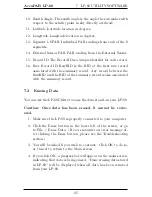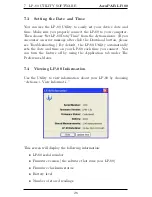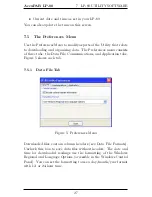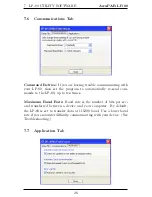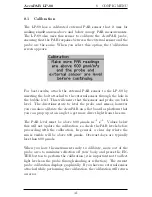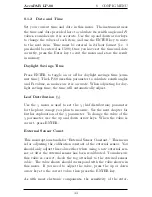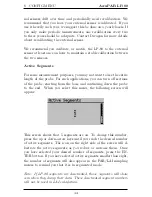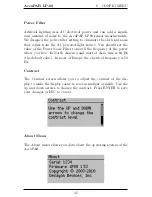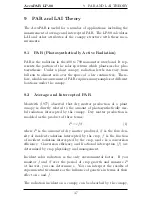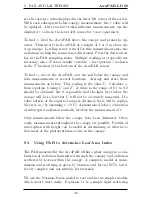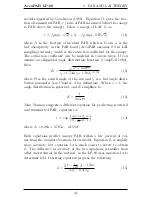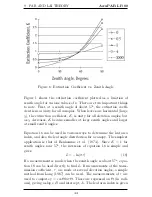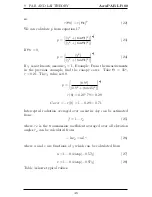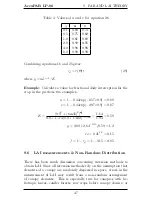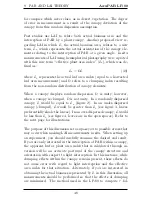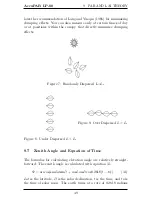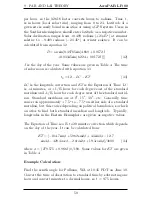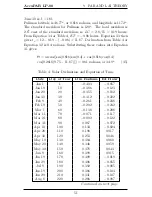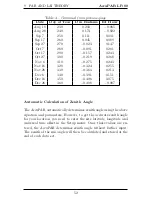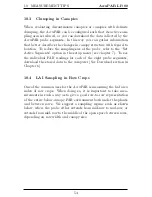
AccuPAR LP-80
9
PAR AND LAI THEORY
for fractional interception are those from which you calculate
t
,
r
, and
r
s
. If
S
is the PAR reading from an upward-facing AccuPAR above
the plant canopy,
R
is the reflected PAR above the plant canopy (in-
verted AccuPAR above the crop),
T
is the upward-facing AccuPAR
below the plant canopy, and
U
is the reflected PAR from the soil
surface, then
t
,
r
, and
r
s
can be calculated with equations 6 through
8.
t
=
T /S
(6)
r
=
R/S
(7)
r
s
=
U/T
(8)
Assume you need to know only
t
and measure
S
above the crop
canopy. Level the AccuPAR above the canopy and press the up-
arrow key. The reading displayed in the upper right portion of the
screen is the value for S.
Measure
T
by placing the AccuPAR below the plant canopy. Care-
fully place it below all of the leaves and try to keep the instrument
level. Press the down-arrow key to make below-canopy measure-
ments. The resulting values are displayed below the above-canopy
values on the screen. Since the light below the canopy is extremely
variable, several samples at different locations will be necessary for
a reliable reading. The number of necessary samples can be deter-
mined by taking, for example, ten individual readings and computing
the coefficient of variation with equation 9.
CV
=
s
¯
T
(9)
Where
s
is the standard deviation of the 10 readings.
s
=
s
Σ(
T
i
−
¯
T
)
2
n
−
1
(10)
Where
n
is the number of samples taken. The fractional error in
the measurement of
T
will be
CV
divided by the square root of the
number of samples.
Once you have taken the first below-canopy PAR reading, you will
39

